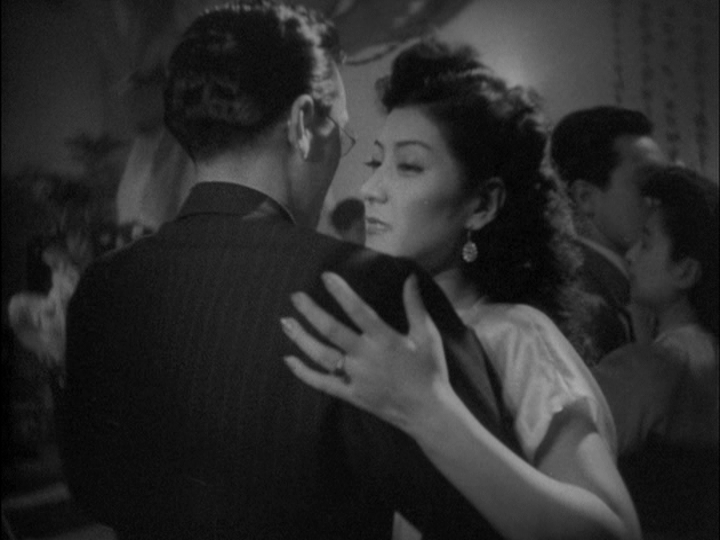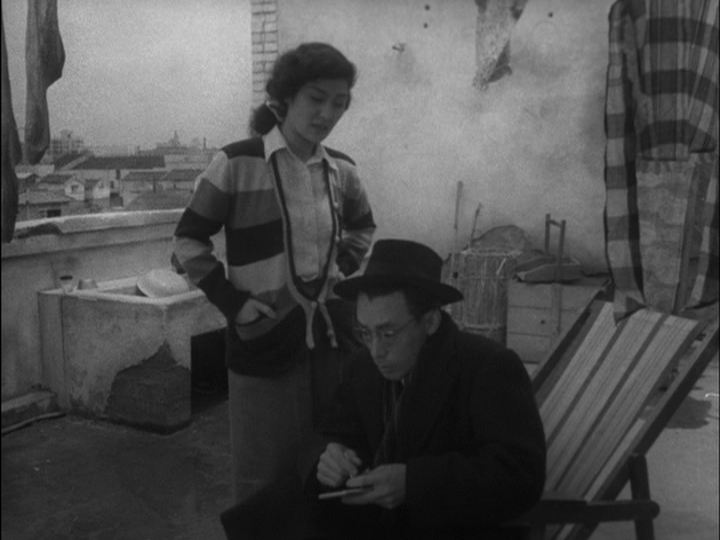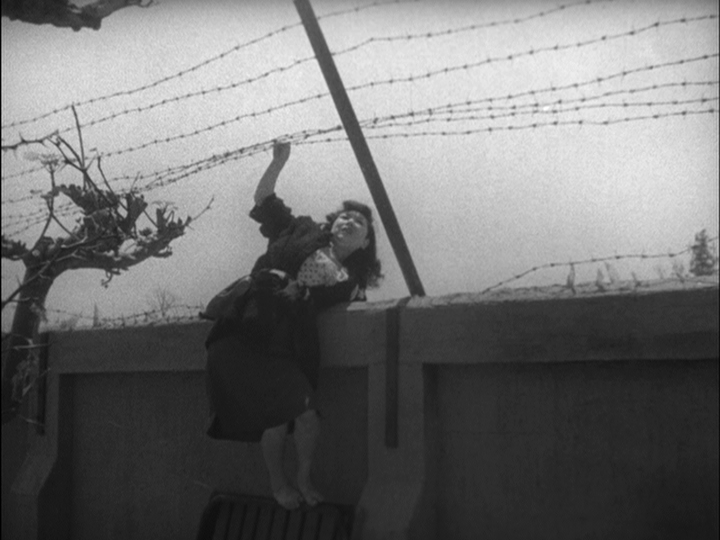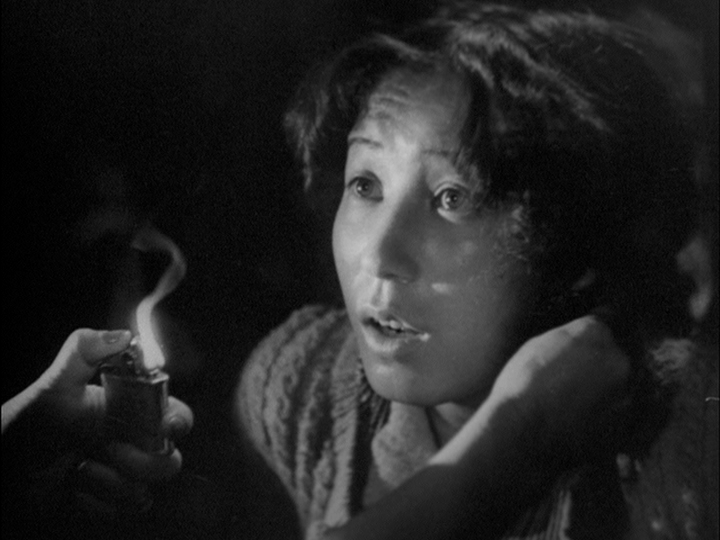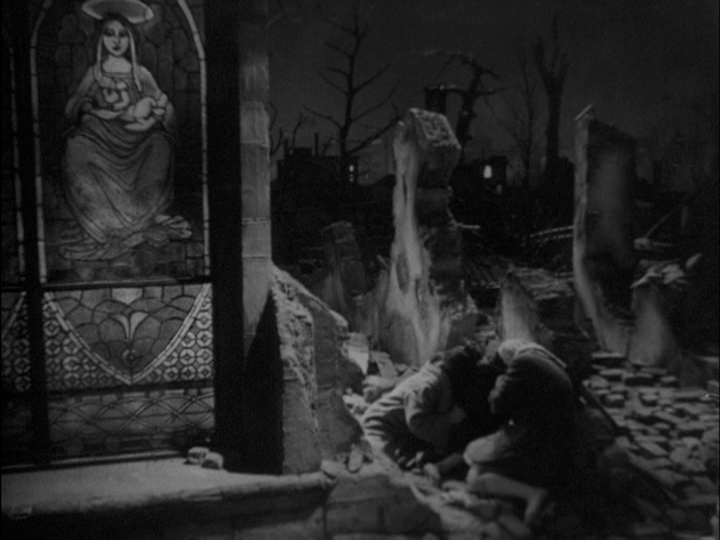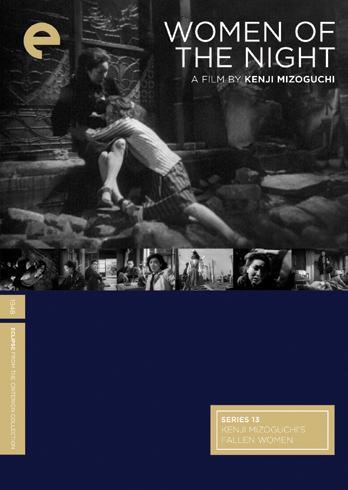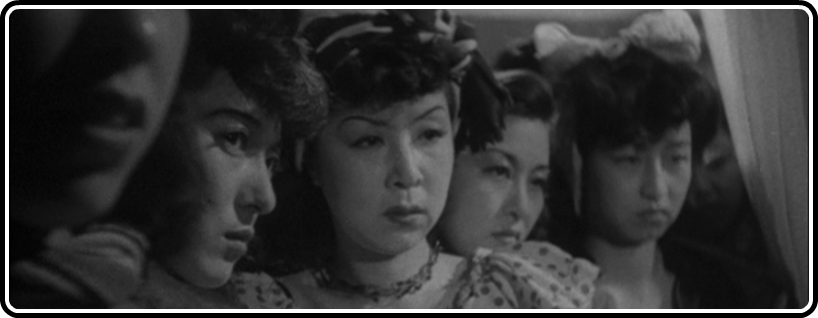
The imminent (and for many of us, long and eagerly anticipated) release of Kenji Mizoguchi’s The Life of Oharu on July 9 portends a fresh surge of interest in the work of this revered titan of classic Japanese cinema. The film’s classical recreation of medieval Japan, Mizoguchi’s immaculate artistry with precisely choreographed extended-take scenes and the poetic infusion of Buddhist spirituality with a tragic twist will certainly make it a spectacular companion piece alongside earlier Criterion editions of Ugetsu and Sansho the Bailiff. Like Oharu, those two films create a rich, immersive experience that affords viewers the opportunity to emotionally inhabit a cinematic realm overflowing with both timeless tranquility and gut-wrenching agony. I hope that it also diverts some attention to Mizoguchi’s less-celebrated works set in modern day Japan. Four of them are collected in Eclipse Series 13: Kenji Mizoguchi’s Fallen Women, and the film I’m reviewing today, Women of the Night (from 1948), provides a fascinating counterpoint to the historical saga that he would direct just four years later.
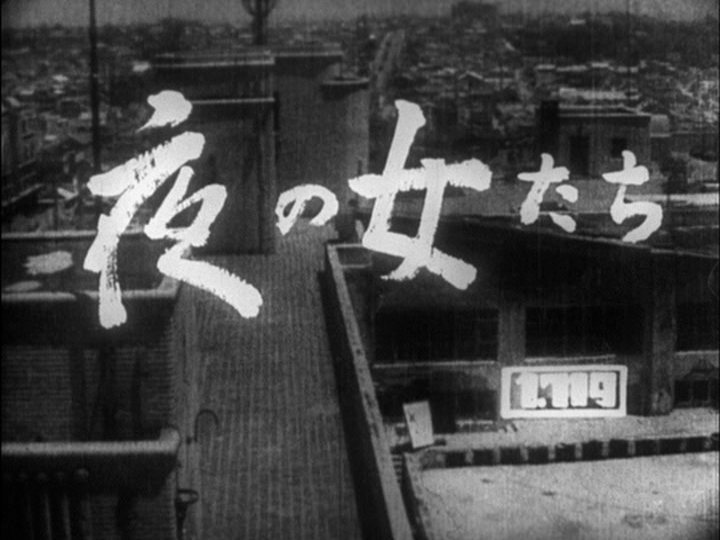
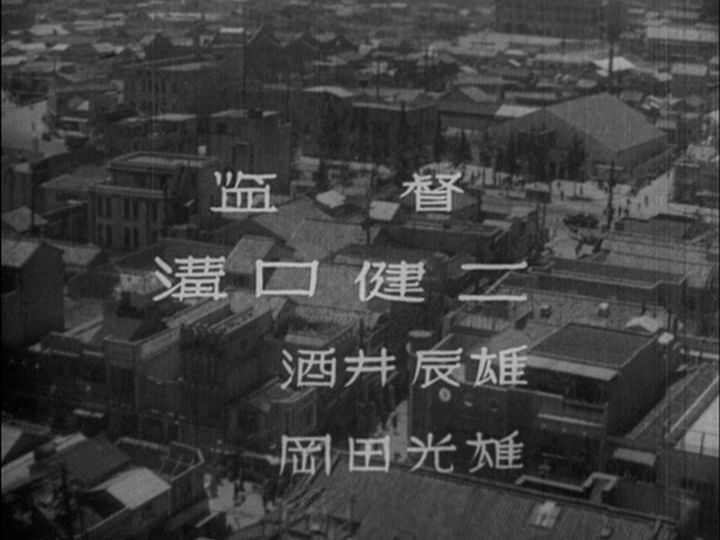
Even the most casual glance at the year Women of the Night was released should communicate crucial information to anyone interested in watching this film. Japan in 1948 was a rough, chaotic, turbulent environment. That’s not at all surprising, considering that such is the usual state of flux for several years following a major war in just about any nation. But Japan was really not used to this sort of thing. The elevation of obedient discipline and unquestioning submission to authority as a supreme ethos governing practically every life born subject to the Emperor was still very fresh in the minds of everyone who saw this film when it first hit theaters. But the contrasts between those mandated values and what was happening in every major city, with the emergence of black markets and the rampaging influence of loose Western values sparked by the American military occupation, triggered crises of cognitive dissonance and ethical conflict, especially in the minds of sensitive souls like Mizoguchi. His life experience had made him more acutely aware of the hardships that Japan’s old patriarchal order imposed on so many women, including his own mother and sisters. Alongside Kurosawa’s Drunken Angel and Ozu’s A Hen in the Wind (also produced in 1948), Women of the Night serves as a vital and informative commentary on societal conditions at a crucial moment when Japan wrestled with the question of what it would become in the aftermath of a shattering war and the breakdown of all the usual customs.
Thus, it’s not all that surprising that what we see as Women of the Night begins is a shaky image of a cityscape scarred by man-made devastation. Shot entirely on location in Osaka, a site previously explored by Mizoguchi a dozen years earlier in Osaka Elegy, the opening credit sequence rolls out over the pan of urban sprawl, a trembling message from a phoenix-like metropolis informing us that, against all odds, it has survived.
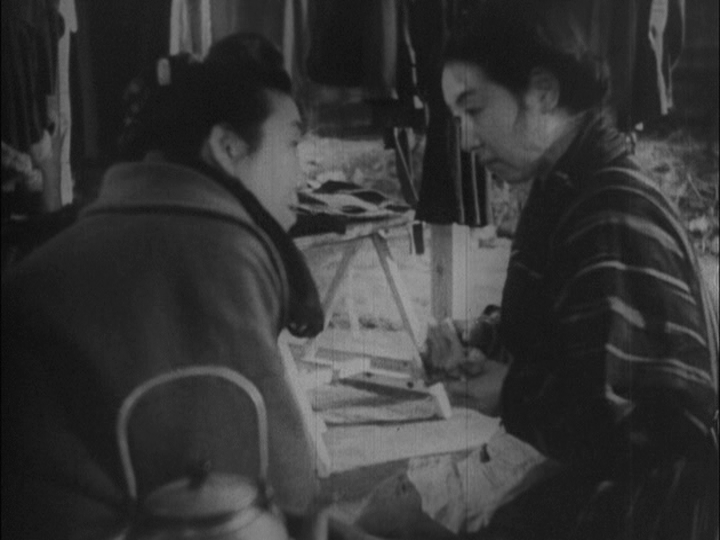
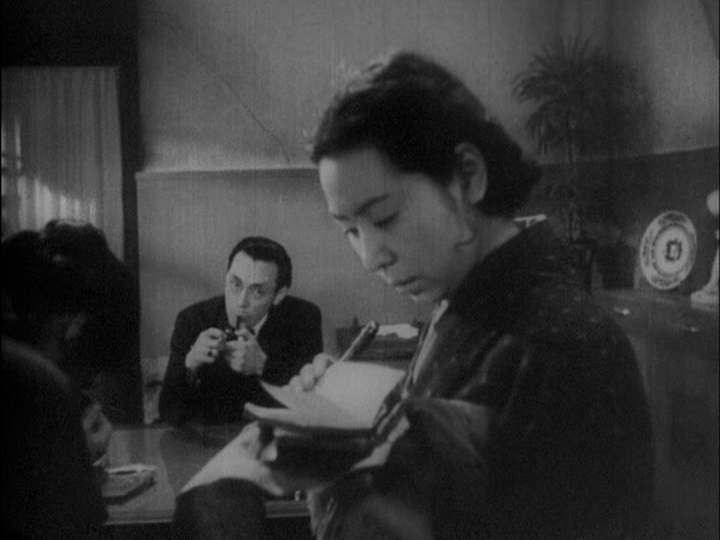
From that broad panoramic overview, Mizoguchi’s camera swoops down from it’s God’s-eye perch into the meanderings of a most ordinary and unremarkable individual through Osaka’s rubble-strewn streets. Fusako is a modest, upstanding woman, awaiting word from her husband, yet to return from fighting in the war, and her sister, still unaccounted for after seeking refuge in Korea. She has a young son, the household’s resources are running low and her plight grows increasingly desperate with each passing day. Unable to sell her meager belongings for more than a pittance, she’s growing desperate, but still recoils in horror at a straight-up proposition to turn a trick for some fast and relatively easy money. After receiving disappointing news that her husband was unable to survive the rigors of combat, circumstances align to put her in the employment of Kuriyama, a sketchy businessman who’s willing to offer Fusako a secretarial position, though he seems to have his eye on her for other, more intimate “promotional opportunities.”
Fusako is played by one of Japan’s greatest female actors, Kinuyo Tanaka, whose career (spanning almost five decades) is well represented in the Criterion Collection. Tanaka worked with most of the great directors of Japan’s cinematic Golden Age. She takes the lead in The Life of Oharu and A Hen in the Wind, playing similar character types of virtuous women forced against their best intentions to sell themselves, and she also played pivotal roles in the other Mizoguchi masterpieces mentioned above. Here we get to see her go through a stunning transformation from prudent, respectable grieving housewife to hardened, cynical streetwise prostitute, only to be broken and humiliated to her core when she realizes that the path she fell into is one that surely leads to destruction.
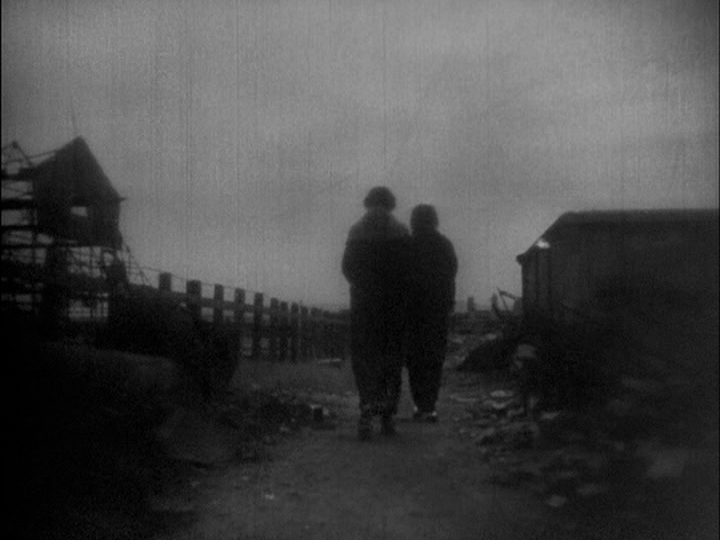

Emerging from the government-enforced and propagandizing politicization of his films during the war years, Mizoguchi was influenced by the Italian neorealists then emerging in Europe as prime shapers of new cinematic approaches and attitudes. Though he still relied on constructed sets and the involvement of familiar and commercially viable movie stars, his interest in incorporating the rugged street scenes and identifiable landmarks of Osaka into his film, along with the raw and pitiful striving of his protagonists, put him about as close to the neorealist movement as Japanese film ever got. It was a brief phase for him, as it turned out, but of inestimable value as it captured this unique transitional era for us to look back on today. I can’t help but wonder what that patch of riverfront real estate in downtown Osaka looks like nowadays.
Mimicking the chaotic randomness of the postwar era experienced by many of his viewers, Mizoguchi introduces Fusako’s sister Natsuko through a haphazard reunion on an Osaka street corner one afternoon. Natsuko is several steps ahead of her older sister in assimilating to the new order – her appearance is more Westernized, she works as a dance-hall girl flattering rich men as they spin to the “boogie woogie,” and generally just seems more worldly-wise than Fusako, having had to rely on her wits more heavily to make it on her own.
Of the two sisters, Natsuko is the more “situation ethical,” whereas Fusako is more proper, naive and moralistic – therefore, more easily shattered when the harsh truth of the moral compromises made by those around her is revealed. Most disappointing to Fusako is when she discovers that her younger sister has been carrying on an affair with her boss Mr. Kumiya, who had also made his own advances on Fusako, though presumably not getting quite so far, so easily. That crush of disillusionment, accompanied by the death of her young son to tuberculosis, breaks down the final barrier that had prevented the virtuous war widow from conceding her dignity in order to generate the quick income earned by Women of the Night.
Completing this particular trio of fallen women is Kumiko, Fusako’s teenage sister-in-law, sibling to her late husband. Kumiko’s destiny as a streetwalker comes about by accident, mainly through her fascination with the allures of the glamorous nightlife that will get her out from under her mother’s protective gaze and into the excitement that she craves. After running away from home with a purse full of stolen cash, she predictably falls into bad company, swiftly experiencing seduction, rape, betrayal and a brutal beat-down in exchange for her blind, misguided trust. The kinetic intensity of this sequence, a long three-minute extended shot in which we see Kumiko mercilessly assaulted and stripped by a gang of juvenile hookers, still resonates as shockingly strong stuff as it erupts on our screen.
Meanwhile, Fusako and Natsuko continue on their descending spirals as they find “the life” ever more difficult to escape, especially after they’re hauled in by the cops and cooped up in some kind of women’s reformatory. There they are subjected to condescending but presumably well-intentioned efforts to set them back on the right path. It’s roughly at this point that Mizoguchi’s urgent concerns to convey a morally corrective plea to his audience take over in full force, and his heavy-handed approach may cost him some credibility in the eyes of more than a few contemporary viewers. My own opinion is that while the sermonizing does come across as maudlin and manipulative at times, I can understand his zeal to a certain extent. He had a desire to help women avoid getting sucked into the terrible vortex of vice and corruption that was clearly a big risk and temptation at the time, even though he understood how powerless so many of them were to find a more viable solution to their basic economic problems – especially if their virgin innocence had already been taken from them by cruel fate.
Be that as it may, Mizoguchi’s fluid camera and profound compositions offer ample material for simple viewing pleasure, and the juicy performances of his cast, the women in particular, will satisfy fans of ripe 1940s vintage melodrama.
As Women of the Night ramps up the tension en route to its shrieking, clawing, hair-pulling finale, it treads a fine line that verges on a descent into the gutter of maudlin exploitation and wallowing in misery, even as it thrusts a sharp edge of unapologetic proto-feminist “vengeance is mine” righteousness in the face of hard-hearted men who routinely demean and despise such women with hardly a second thought. The film’s last scene, captured in the video clip below, brings the three sisters together, each of them shattered and ruined as a result of their hellish journey through the Osakan underworld. Though Natsuko, Fusako and Kimiko each take turns trying to put on a brave face, the stark reality of their suffering, and their need for redemption, proves to be too powerful for their denial to withstand. At least, that’s the way Mizoguchi scripts it, hoping perhaps that by showing them in their abject misery, at least a few wandering souls can be spared the necessity of learning such lessons an even harder way. You don’t really need subtitles to figure out what’s going on. In fact, the lack of text on the screen allows the visual and audio elements to speak even more eloquently.
Kenji Mizoguchi is commonly referred to as having the most evolved feminist sensibilities of any of the great Japanese directors, rivaled only by Mikio Naruse in that regard. There’s certainly no disputing the fact that he was a trailblazing pioneer in promoting this kind of sensibility in not only Japanese cinema, but in world film in general. Still, younger women and men of the 21st century probably have to invest a bit of work into understanding the context in which Mizoguchi operated before they can fully respect how courageous and unorthodox his handling of such material was back in the middle of the 20th century – especially in a culture as steeped in male chauvinism as Japan was in those decades. From a 2013 perspective, Women of the Night is quite a mixed bag in the messaging department, signaling an enduring note of protest against injustice and exploitation even as it relies on stereotypes of women as duplicitous cat-fighters in order to drive its points home. As a forerunner to more progressive, less emotionally manipulative stories that deal with similar themes (such as Shohei Imamura’s The Insect Woman, from 1963 and recently reviewed on my Criterion Reflections blog), Women of the Night marked an important advancement on behalf of the cause of women’s liberation. Mizoguchi can’t be faulted for failing to clearly articulate a light at the end of that particular tunnel – he and his fellow survivors were still fighting to clear a path back from underneath the rubble of a world turned upside down. It’s significant then to note that his greatest cinematic triumphs and enduring legacy would only be secured in his films of the 1950s, when he took a long look backwards to discover and articulate the wisdom that sustained and pointed out a way forward from the debacle created by the current generation in power.
